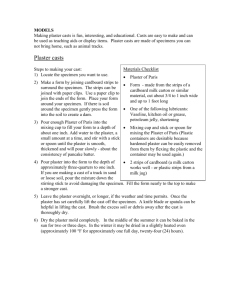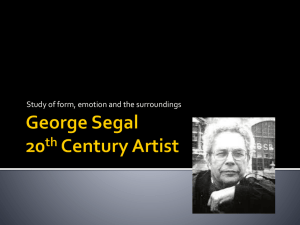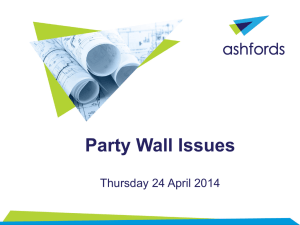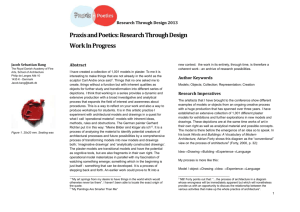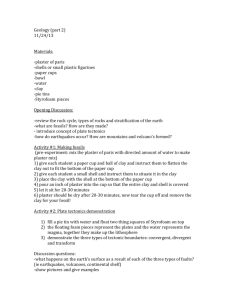fragments eastern
advertisement
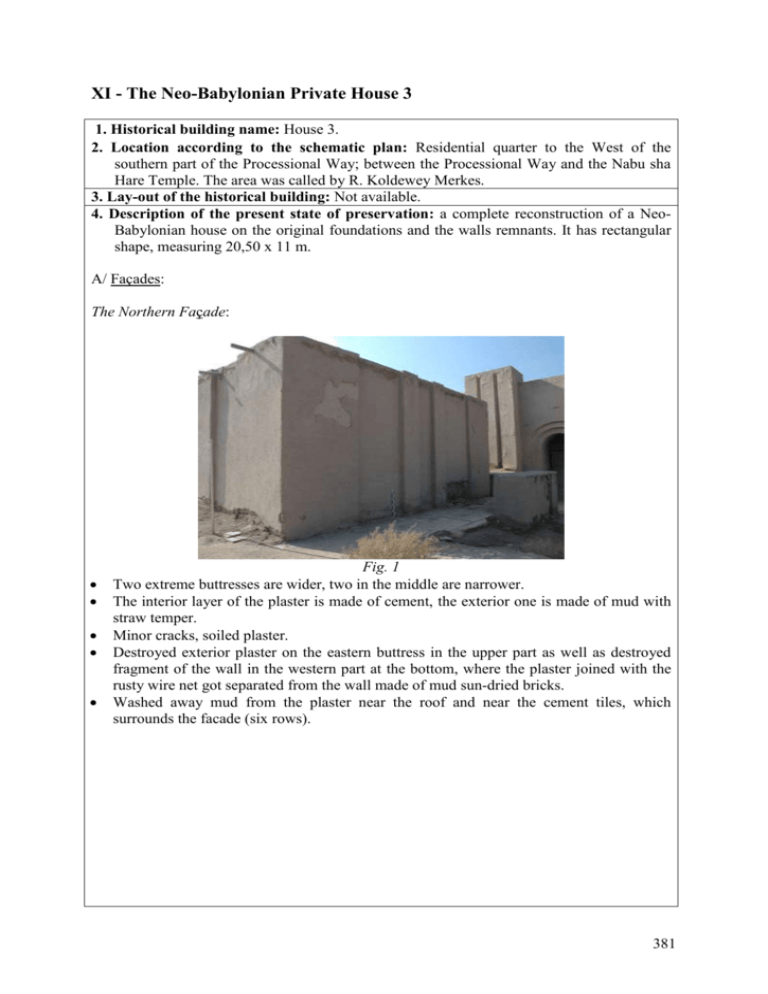
XI - The Neo-Babylonian Private House 3 1. Historical building name: House 3. 2. Location according to the schematic plan: Residential quarter to the West of the southern part of the Processional Way; between the Processional Way and the Nabu sha Hare Temple. The area was called by R. Koldewey Merkes. 3. Lay-out of the historical building: Not available. 4. Description of the present state of preservation: a complete reconstruction of a NeoBabylonian house on the original foundations and the walls remnants. It has rectangular shape, measuring 20,50 x 11 m. A/ Façades: The Northern Façade: Fig. 1 Two extreme buttresses are wider, two in the middle are narrower. The interior layer of the plaster is made of cement, the exterior one is made of mud with straw temper. Minor cracks, soiled plaster. Destroyed exterior plaster on the eastern buttress in the upper part as well as destroyed fragment of the wall in the western part at the bottom, where the plaster joined with the rusty wire net got separated from the wall made of mud sun-dried bricks. Washed away mud from the plaster near the roof and near the cement tiles, which surrounds the facade (six rows). 381 The Eastern Façade: Fig. 2 Four wide buttresses, the entrance to the building (from the Procession Street direction), five pipes for raining water at the top. A large number of horizontal and vertical cracks on the plaster. Losses of the plaster in strips (0,5 m wide) at the ground and roof levels. In the southern part two places with strongly washed away mud from the plaster; traces of rain water stains. Preserved one wooden door-frame and the door. The Southern Façade: Fig. 3 Four shallow buttresses. The plaster strongly destroyed; large areas of the outside plaster layer separated from the inside plaster layer; cracks. The loss of the plaster at the roof level (stripe 0,6 m wide). 382 The Western Façade: Fig. 4 Four shallow buttresses, two pipes. Badly damaged – numerous losses of the exterior plaster, cracks especially in the northern part at the upper level. The stripe up to 0,8 m high above the ground and the stripe and 0,4 m wide at the roof level – plaster destroyed, considerable losses, noticeable contemporary baked bricks.4 B/ Roof: There is no entrance to the roof in the middle of the building. Fig. 5 383 C/ Interior: Courtyard – Floor: Fig. 6 Paved with cement tiles, soiled by sand. There are broken chairs on the surface, under the walls mud is washed away from the plaster. Courtyard – The Northern Wall: Fig. 7 The cracked plaster. The loss of plaster (stripe 0,6 m wide) at the roof level. East from the passage to the room the loss of the plaster as well as the loss of some fragments of the bricks in the stripe up to 0,7 m high above the ground. 384 Courtyard – The Eastern Wall: Fig. 8 Exit, one niche. The exterior plaster is badly damaged: cracks, mud is washed away from the plaster, some minor losses. The loss of the plaster at the roof level (stripe 0,6 m wide). The loss of the plaster and the loss of some fragments of the bricks (stripe 0,7 m wide at the floor level); traces of efflorescence. Courtyard – The Southern Wall: 385 Fig. 9 Some minor losses and cracks on the exterior layer of the plaster. The loss of the plaster (stripe of 0,6 m wide at the roof level). The loss of the plaster and the loss of some fragments of the bricks in the stripe up to 0,7 m high above the floor). Courtyard – The Western Wall: Fig. 10 The exterior plaster strongly cracked, air-bubbled, the plaster is peeling off and falling off. The loss of the plaster (stripe of 0,8 m wide close to the roof). Near the floor in the loss places of the clay plaster noticeable cement mortar. Two rooms located North of the courtyard – Floor: Fig. 11 386 Fig. 12 Made of cement tiles, a thin layer of sand, old chairs. Two rooms located North of the courtyard – Ceiling: Fig. 13 387 Fig. 14 The wooden beams and the mats – very moist, partially covered with white coating. Two rooms located North of the courtyard – The Walls: Fig. 15 388 Fig. 16 Cracked plaster, cobwebs, water stains, droppings. Near the floor in several places completely destroyed plaster as well as the surfaces of the bricks. Two rooms located East of the courtyard – Floor: Fig. 17 389 Fig. 18 Made of square cement tiles. Sand and rubbish on the floor. Two rooms located East of the courtyard – Ceiling: Fig. 19 Fig. 20 390 General state – good, one bat. Two rooms located East of the courtyard – The Walls: Fig. 21 Fig. 22 In a strip up to 0,8 m high above the ground the plaster very badly damaged, washed away, falling off by large flakes. Cobwebs, bird’s nests in the niches. 391 One room located South of the courtyard – Floor: Fig. 23 Pieces of mud plaster under the walls. The layer of sand and rubbish, pieces of chairs. One room located South of the courtyard – Ceiling: Fig. 24 Moist beams and reed mats, noticeable white coating. 392 One room located South of the courtyard – The Northern Wall: Fig. 25 Water stain, minor deterioration of the plaster. The loss of the plaster in the north-western corner – efflorescence on the bricks up to 0,6 m high above the floor level. One room located South of the courtyard – The Eastern Wall: Fig. 26 The walls soiled with droppings and cobwebs. There is a lack of plaster in the stripe up to 0,9 m high above the ground, destroyed brick surface. Efflorescence at the floor level. 393 One room located South of the courtyard – The Southern Wall: Fig. 27 Cobwebs, scratches on the plaster, droppings. Destroyed plaster in the stripe up to 0,7 m high above the ground level; noticeable rusty wire net. Strong efflorescence on the brick surface. One room located South of the courtyard – The Western Wall: Fig. 28 Traces of droppings, rain water stains, there is the birds’ nest in the niche, scratches on the plaster. The badly damaged plaster in the north-western corner, efflorescence. The plaster is washed away near the floor. 394 Description elaborated on 19th November 2004 and photographs taken on 20th November 2004 by Mirosław OLBRYŚ (Poland). The photograph no. 5 was taken by Agnieszka Dolatowska in July 2004. Translation into English by Mirosław Olbryś and Piotr Szarżanowicz on 27th November 2004. Edited by George Gogolewsky on 29th November 2004. 395

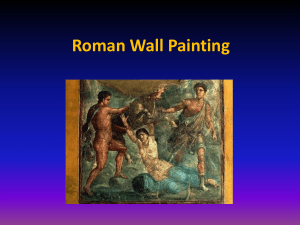
![First Aid Training : Bronze [Power Point]](http://s2.studylib.net/store/data/005424634_1-e0b0e5e602f7c1666ebc2e9ff3f4a1b5-300x300.png)
